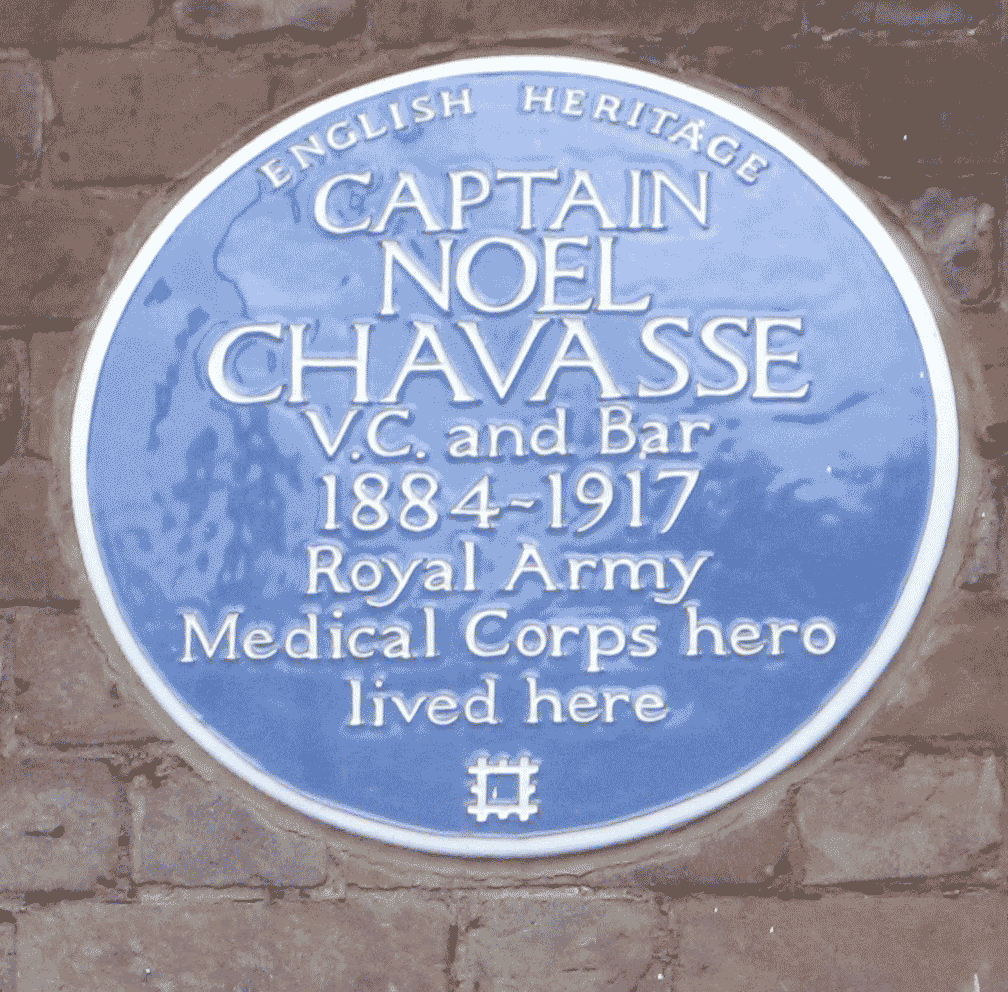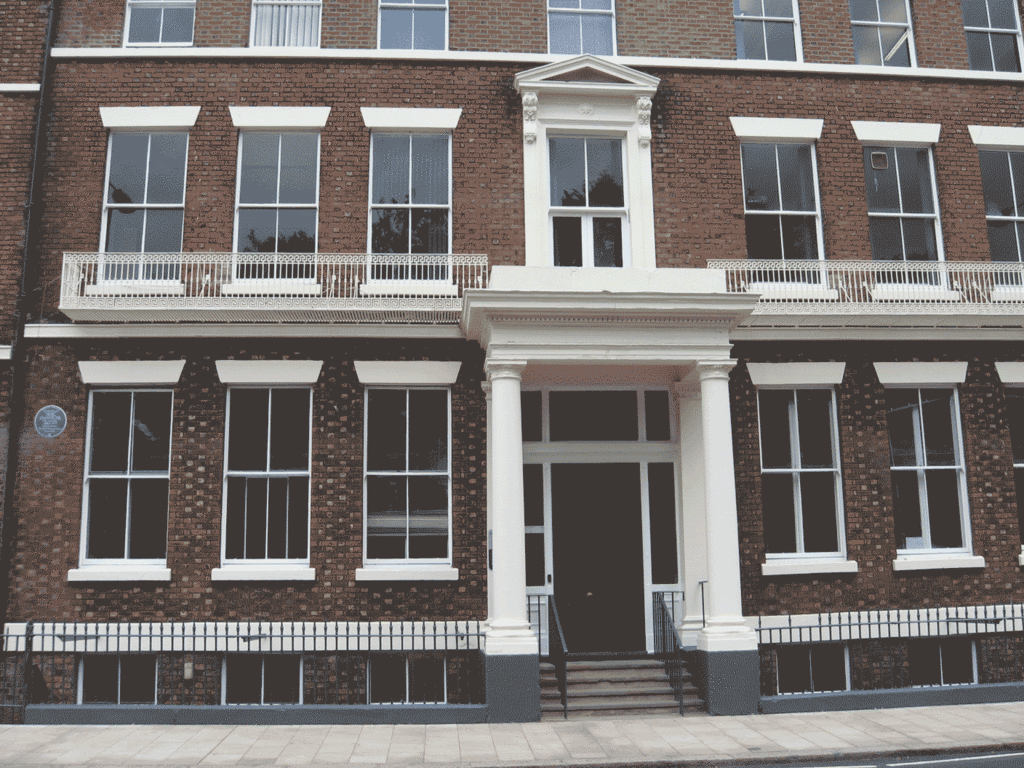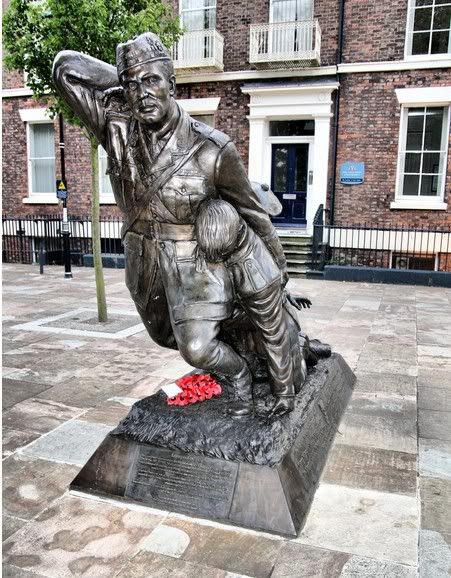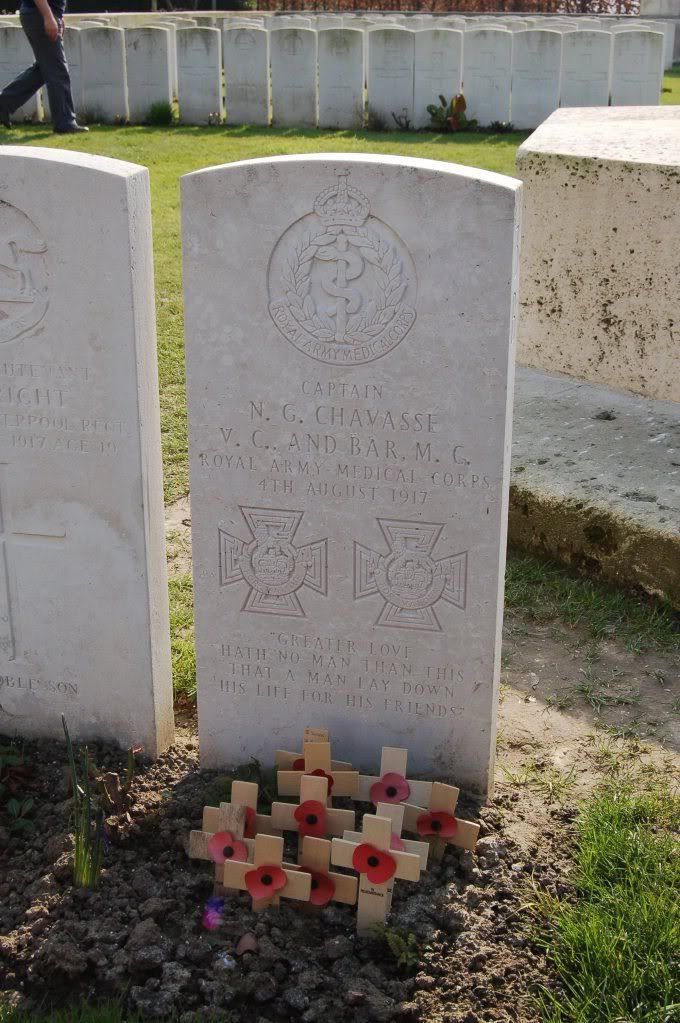Noel Godfrey Chavasse was born, along with his twin brother Christopher, on Sunday 9th of November, at 36 New Inn Hall Street, in Oxford. He was the son of a priest, in a family of seven children, and from 1887 to 1900, until his father was made Bishop of Liverpool, he and his twin brother Christopher were both pupils of Magdalen College School (MCS), in Oxford. Both Chavasses made their greatest impact on the sports field and on the river, both boys being very keen at rowing. Indeed, Noel Chavasse, whist not quite being the all-rounder that his brother proved, managed to set a new long jump record of 15' 2" in the 1899 Sports Day, and in both 1897 and 1898 he came in one of the three medal positions in the annual sack race, coming first in the former. He was awarded a full colours tie for his success at rowing.
After leaving MCS in 1900, Chavasse remained in contact with his old school through the Old Waynflete's club (the Old Boy's society), and from 1908-12 he and his brother managed to win almost every OW race that the school put on. He was a distinguished university athlete, both at Liverpool University, and from 1904 Trinity college, Oxford, from where he graduated with a 1st in medicine.
After a brief stint in the Oxford University equivalent of the modern Combined Cadet Force, at which he rapidly rose through the ranks, he joined Royal Army Medical Corps, and was attached to the 10th King's Battalion (Liverpool Regiment) in 1913. When war broke out Chavasse was sent to France, arriving in November 1914. By 1916 he was promoted to Captain, and at the Battle of Guillemont in August of that year received his first Victoria Cross, for continuing to save wounded soldiers who were lying in No Man's Land, despite being injured with shell splinters in his back, and being under heavy fire. The news of the VC reached his old school soon after, and the school sent him a letter of congratulations, to which he replied:
"Your very kind letter reached me to-day. Need I to say how I appreciated it? I suppose one longs to please one's old Headmaster more than anybody, and when the old school is pleased, it makes me very pleased. My brother and myself were very much touched by the kindness shewn us by you and the old school after we came back to Oxford, and I know we shall never forget it, and we shall always try to be worthy of the old school we love so well. Thank you very much for your kind letter,
Your old pupil,
Noel Chavasse.
After a brief recovery period at home, Chavasse was back in France, and on 1st August 1917 he was involved in the 3rd Battle of Ypres, where he, with a grave head injury, worked desperately for hours with a captured German medic in appalling conditions to try and save the lives of the many wounded men who were brought to them. Later that day Noel received another wound, and was given a direct order to return to the Allied base, which he ignored, refusing to leave his post.
On the 2nd August a shell hit the aid post where Noel was working whilst he was attempting to get some sleep, killing everyone but him, leaving Noel with heavy injuries to his abdomen, which bled profusely. He was stretchered to safety, but died of his wounds in hospital two days later. For his actions in attempting to save the lives of the many wounded and dying soldiers brought to him, he was posthumously awarded a second VC, only the second man in the history of the British Army to be accorded that honour.
Although born in Oxford, the city of Liverpool claimed the young surgeon as one of their own, as he had moved to the city in 1900 when his father became the Bishop of Liverpool. Capt Chavasse had graduated via Oxford and Liverpool Universities as a doctor, becoming an orthopaedic surgeon at Liverpool Royal Southern Hospital.
A statue, by city sculptor Tom Murphy, is now situated in Abercromby Square where the Chavasse family once lived.
This is the Chavasse Memorial in Abercrombie Square in Liverpool. It is a recent memorial - unveiled in 2008. It honours Noel Chavasse and another 15 men from Liverpool that were awarded a VC between 1857 and 1917.
Sculptor is Tom Murphy.
http://www.liverpoolpicturebook.com/








 Reply With Quote
Reply With Quote
Bookmarks